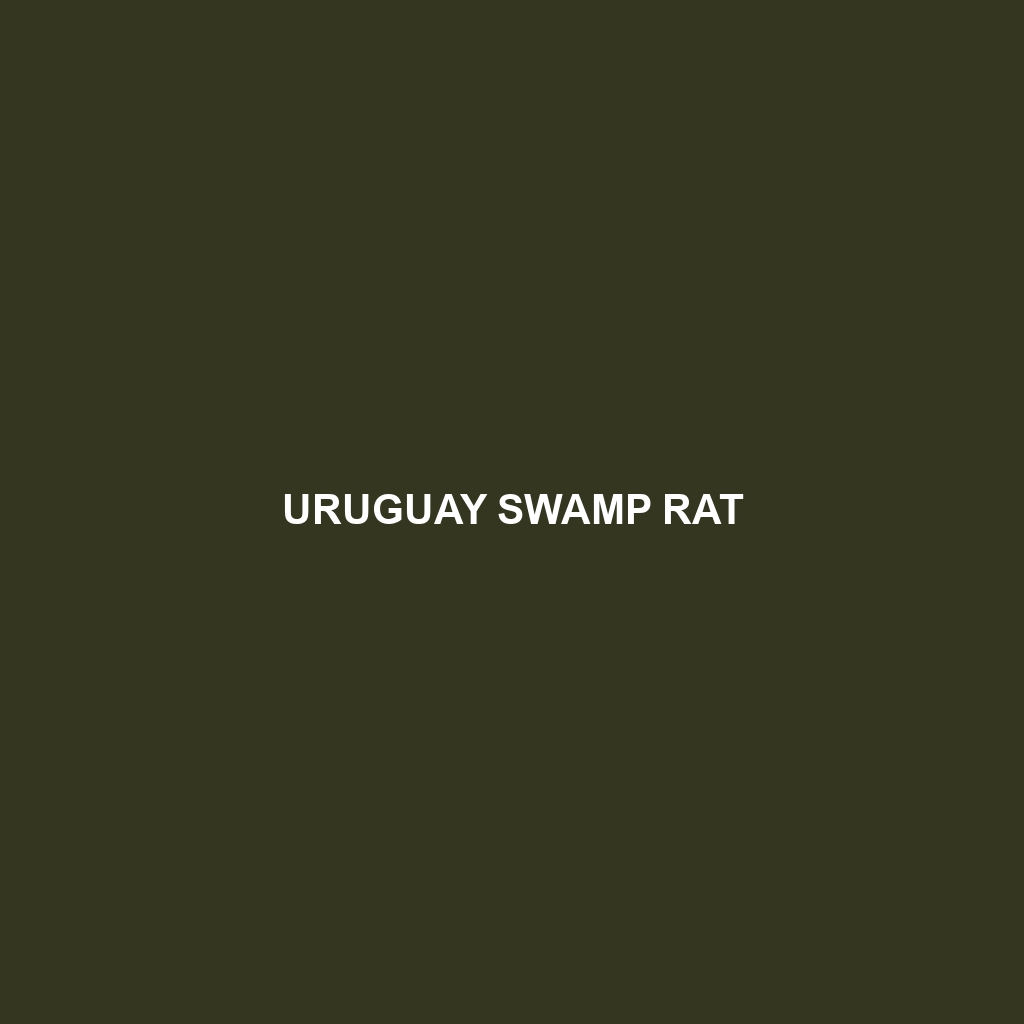Uruguay Swamp Rat
Common Name: Uruguay Swamp Rat
Scientific Name: Oxymycterus nasutus
Habitat
Habitat: The Uruguay Swamp Rat primarily inhabits marshy regions and wetlands in southeastern South America, particularly in Uruguay and parts of Argentina. This rodent thrives in areas characterized by dense vegetation and abundant water sources, making these habitats crucial for its survival.
Physical Characteristics
Physical Characteristics: The Uruguay Swamp Rat is a medium-sized rodent, measuring approximately 20 to 25 centimeters in body length, excluding the tail. It features a distinctive fur coat that ranges in color from light brown to dark gray, often with lighter underparts. Its elongated body and relatively large, rounded ears help it navigate through its wetland habitat. The rat’s robust limbs are adapted for swimming, and its long tail aids in balance and movement through dense vegetation.
Behavior
Behavior: Known for its semi-aquatic lifestyle, the Uruguay Swamp Rat exhibits various behaviors typical of both arboreal and terrestrial rodents. It is primarily nocturnal, often foraging for food at night. The rat is an adept swimmer and frequently uses water channels to escape predators and move between feeding areas. Socially, these rats are often seen in small groups, exhibiting complex social interactions and communication through vocalizations and scent marking.
Diet
Diet: The Uruguay Swamp Rat is an omnivore with a varied diet that includes aquatic plants, seeds, fruits, and invertebrates. Its feeding habits are particularly linked to its habitat, where it forages among the vegetation and along the water’s edge. The rodent is known to consume roots and tubers as well, making it an essential contributor to the plant life cycle in its ecosystem.
Reproduction
Reproduction: The Uruguay Swamp Rat typically breeds throughout the warmer months, with peak breeding seasons observed in spring and summer. Litters usually consist of 3 to 6 offspring, which are born blind and helpless. The female provides extensive care, nurturing the young until they are able to fend for themselves. Notably, maternal care in this species includes teaching the young how to swim and forage, critical skills for survival in their environment.
Conservation Status
Conservation Status: The IUCN currently classifies the Uruguay Swamp Rat as “Vulnerable” due to habitat loss and degradation primarily driven by agriculture and urban development. Conservation efforts are crucial to protect this species and its diminishing habitat.
Interesting Facts
Interesting Facts: The Uruguay Swamp Rat is unique in its adaptation to both terrestrial and aquatic environments. It exhibits a remarkable ability to navigate through dense marsh vegetation and can remain submerged for extended periods to evade predators. Additionally, this species has become a focal point for studies on the impacts of climate change on wetland ecosystems.
Role in Ecosystem
Role in Ecosystem: As a key herbivore in its habitat, the Uruguay Swamp Rat plays a crucial role in the nutrient cycling of wetlands. Its feeding habits contribute to the growth and distribution of aquatic plants while serving as prey for a variety of predators, such as birds of prey and small mammals. The rat’s burrowing activities also enhance soil aeration and moisture retention, benefiting the overall health of its ecosystem.
